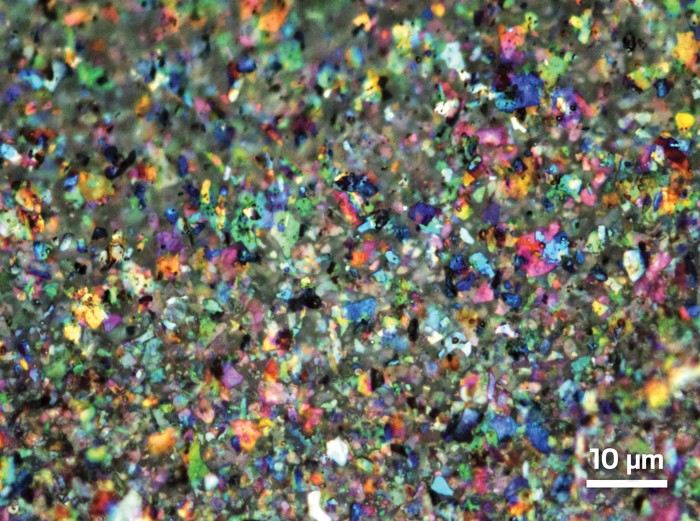
Valeriia Poliukhova describes herself as an artist by nature. The School of Materials Science and Engineering postdoctoral fellow said she hopes to attract the attention of those outside of materials science with her nano art images of the natural polymers they are working on. Those efforts just got a big boost from Chemical & Engineering News, which featured her image, “Under the Sea,” in the “Chemistry in Pictures” series.
Poliukhova works in in Vladimir Tsukruk’s Surface Engineering and Molecular Assemblies (SEMA) lab, where she created her art by imaging the surface of Mxene/cellulose nanofiber film, which is, as Poliukhova noted, notably artistic. Without the use of polarization, this film and the MXene flakes within it, produce vivid, artistic images which Poliukhova has been capturing in her nano art.
Poliukhova said she hopes her nano art can inspire the next generation of scientists and researchers. As a first-generation scientific researcher, she knows how important exposure to these kinds of accessible examples of materials science are. “I am the only one in my family who has a science education and who has a Ph.D.,” she said. “I hope my work will engage a younger generation of scientists and women to be interested in research and in academia.” By spreading information related to her research through art as well as peer-reviewed publications, Poliukhova aims to engage people who may have never heard of materials science to help them discover a vivid field that is an integral to part of modern life.
Poliukhova lo.jpeg) oked through images and at the film with an eye toward artistry, picking the prettiest spots. Ultimately, she imagined the bright flashes of color as “fish swimming under the sea,” she said. That led her to the title, “Under the Sea.” The whole area of the film was beautiful, Poliukhova said, noting other images can be constructed with similar principles by blending various materials. She described other films that she had made looking like galaxies or coral reefs, making the natural polymer and embedded materials a prime subject for nano art.
oked through images and at the film with an eye toward artistry, picking the prettiest spots. Ultimately, she imagined the bright flashes of color as “fish swimming under the sea,” she said. That led her to the title, “Under the Sea.” The whole area of the film was beautiful, Poliukhova said, noting other images can be constructed with similar principles by blending various materials. She described other films that she had made looking like galaxies or coral reefs, making the natural polymer and embedded materials a prime subject for nano art.
The interplay of science and art is important, Poliukhova said. Even without background knowledge of the field or understanding of the science behind the image, anyone can appreciate its beauty. This lowers barriers and broadens appeal, bringing material sciences to those not previously aware or interested in MSE. Along with fellow SEMA group members, Poliukhova has been working with MXene and cellulose nanocrystals and nanofibers to create multilayered films. By combining cellulose nanocrystals, which are biodegradable and sustainable, with MXene nanoflakes, known for their high electrical conductivity and large surface area, the researchers have created ultrathin films around 1 nanometer thick. They recently published article in Advanced Functional Materials, “Vivid Structural Coloration in Transparent MXene-Cellulose Nanocrystals Composite Films,” exploring this research.